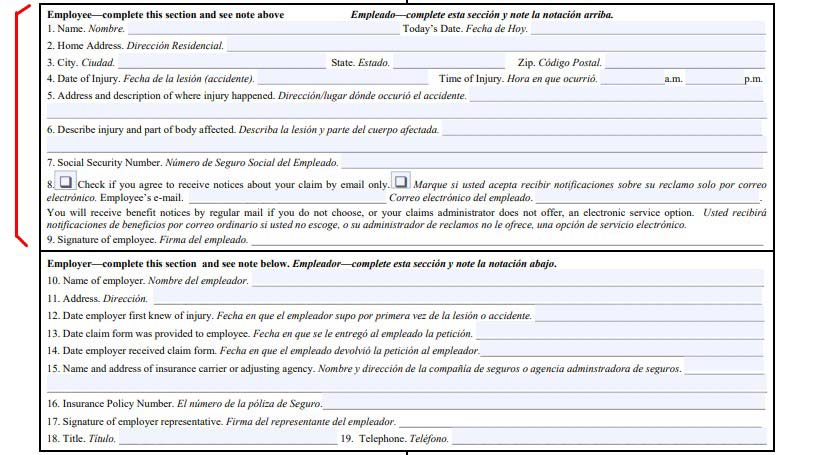Small businesses and large corporations alike are notorious for not giving their employees all the information they are going to need should they ever suffer a workplace accident. This might be caused by forgetfulness or laziness, or it might be an attempt to reduce their chances of having to pay out a workers’ compensation claim. Regardless of the reasons behind why you don’t know what to do if you get injured while on the job, it is time to change that, starting with the most basic and crucial pieces of the process: the DWC-1 form.
Your DWC-1 claim form is your declaration that you have been injured while working, and that you believe you require compensation while you recover. A common misconception is that going to the doctor – something you should definitely do as soon as possible – essentially creates a workers’ comp claim for you. This is not true. You need to get your hands on a DWC-1 claim form, preferably immediately after your accident.
The moment a manager, supervisor, or other employer learns of an employee accident, they must make a DWC-1 form available to them. If the employee is no longer at the jobsite, such as would be the case if their injury required hospitalization or emergency medical attention, reasonable efforts must be made to get a DWC-1 form to them. In cases where an injury incapacitates the worker, the DWC-1 form may need to be given to their spouse, parent, executor of their will, or attorney.
What Do I Include On My DWC-1 Form?
Due to the fact that not many employers explain the workers’ compensation process to their employees in full, many workers may wrongly believe that starting their claim is difficult and therefore not worth the trouble. Filling out a DWC-1 form is actually pretty straightforward.
On the form, you will need to only fill out the “Employee” section, which asks for basic information:
- Name, date, and address
- Date and location of injury
- Brief description of injury
- List of injured body parts
- Social Security Number

When you have completed the DWC-1 form, it must be provided back to your employer. In return, you should be handed the copy that says “Employee’s Temporary Receipt” to keep for your own records.
Filling out and filing the DWC-1 form is really just the beginning of your workers’ compensation claim. Depending on the reaction from your employer’s insurance company, you might need to prepare another handful of documents and take additional steps to prove that you deserve compensation. You may even need to prepare for litigation if you are unreasonably and continually denied.
To get started on the right track, contact our Oakland workers’ compensation attorneys from Pacific Workers’ Compensation Law Center. We have more than 65 years of legal experience and do not accept attorney fees unless we recover you a fair compensation amount, settlement, or beneficial verdict. Get your free case evaluation today to learn more.



